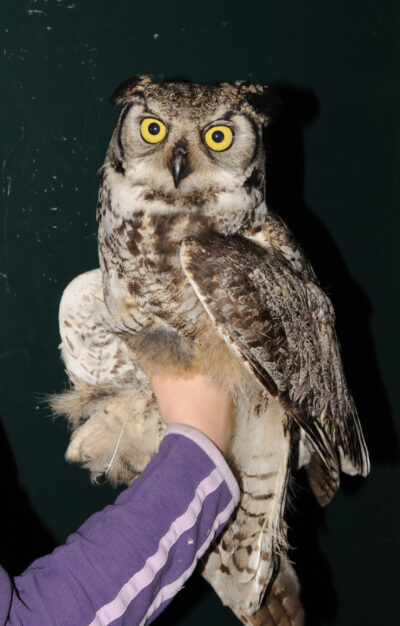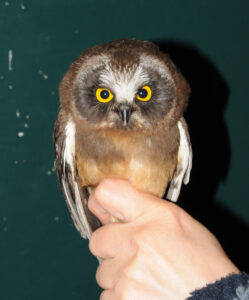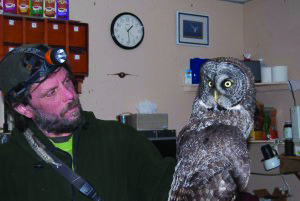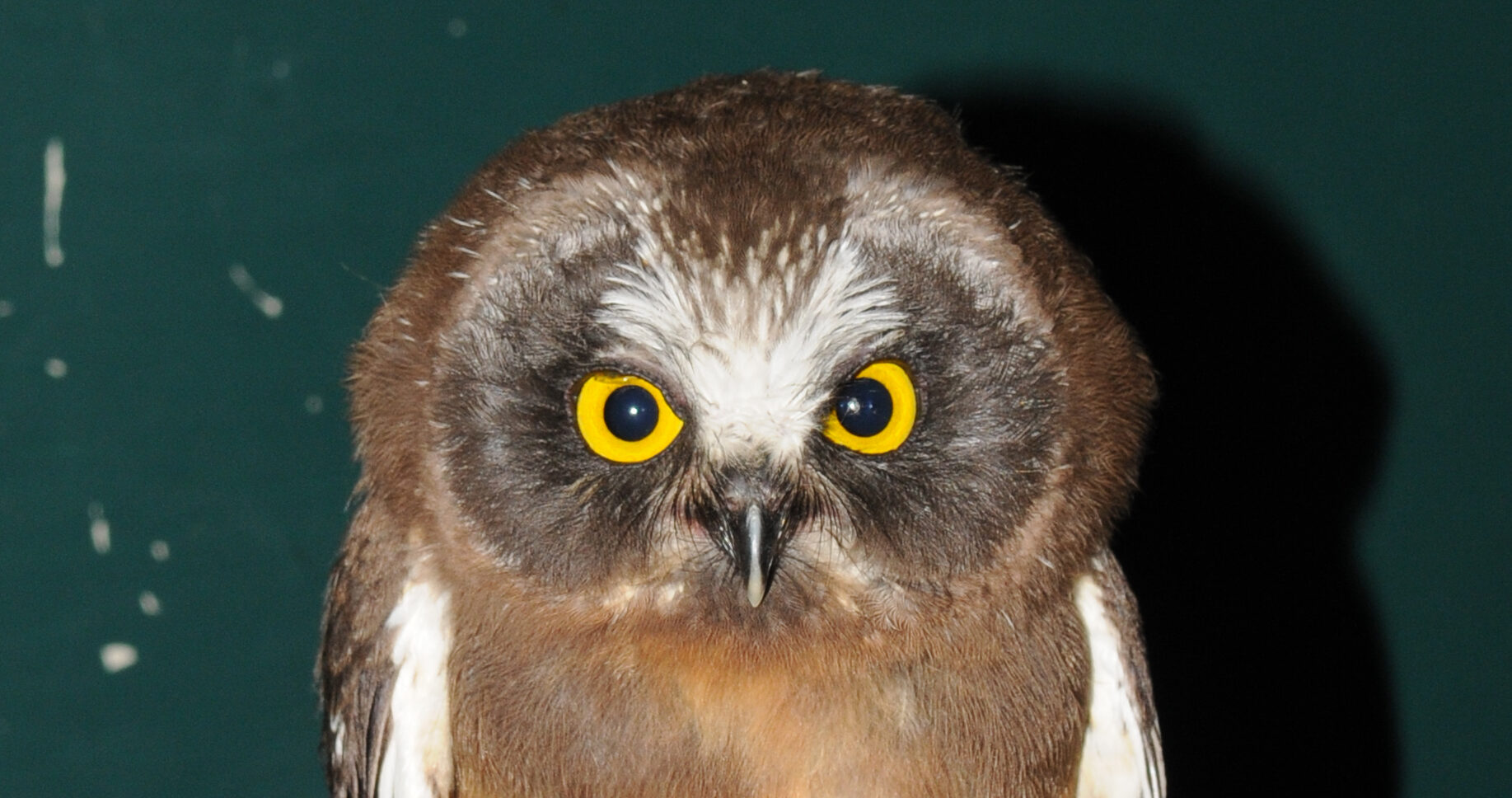
The Great Horned Owl banded during the 2021 summer season at WPBO.
The summer of 2021 represented the fifteenth full season of summer owl research at WPBO. As was the case in 2020, the owls again demonstrated that we don’t always know what we think we know. Last summer, we unexpectedly had our most productive summer owl season at the Point. Over the first 14 years of summer owl banding, we experienced peak numbers of juvenile Northern Saw-whet Owls (NSWO) in 2007, 2012, and 2017. This 5-year cycle in peak NSWO reproductive success had us expecting the next peak to occur in 2022. Therefore, we were surprised to band 624 juvenile NSWO in 2020, our best summer ever for juvenile NSWO. The peaks in 2007, 2012, and 2017 were followed immediately by crashes in apparent NSWO reproductive success in 2008, 2013, and 2018, with counts never exceeding 71 juveniles. As we headed into the 2021 summer banding season, we had no idea whether last summer’s unexpected success meant we would experience a crash this summer or if the numbers would be more similar to what we generally see in the year before an expected peak.
Not only did we not experience a crash this summer, but it was a particularly productive season relative to where we expected to be in the NSWO reproductive cycle. A total of 494 owls were banded this summer (481 NSWO, 12 Long-eared Owls [LEOW], and one Great Horned Owl). The 481 NSWO comprised 388 juveniles and 93 adults. Combined with last summer’s unexpected record number of juvenile NSWO, we have banded 1,012 juvenile NSWO during the previous two summers alone. This brings the number of juvenile NSWO banded during all summer seasons combined to 4,076. This season’s total of 12 LEOW was disappointing, particularly following a record spring season for LEOW. The last time we experienced a peak spring for LEOW, we banded over 100 LEOW in that year’s summer. We had hoped to once again band around 100 LEOW this summer. Not only did that not come to fruition, but it proved to be a particularly poor season for LEOW. However, the Great Horned Owl was not only the first one to be banded during a summer season, but also represents the first summer record at WPBO.

A juvenile Northern Saw-whet Owl banded during the 2021 summer season at WPBO.
One of my favorite aspects of the summer research, which I typically don’t get to include in the seasonal reports, is the information we get back on some of the owls later in the year. In particular, I find it fascinating to see where some of the juvenile NSWO that we band at WPBO in the summer show up during their first fall migration. In the past, the juvenile NSWO we banded here during the summer have been recaptured during their first fall migration at sites ranging from Tofte, Minn., to our northwest, to the southern tip of the Delmarva Peninsula on the Atlantic Coast in Virginia. Last fall, we received information back on quite a few of last summer’s juveniles, including some from new locations. Two ended up near Louisville, Ky. These are the first two juveniles that we know ended up in Kentucky during their first fall migration. It was exciting in and of itself to get our first report of a juvenile ending up in Cape May, N.J., a few months after we banded it here, but it was also of personal interest to me. It was in Cape May that I was introduced to owl banding by Katy Duffy in the ‘90s. After 20 years of waiting for us to do a banding exchange with Cape May, it was amazing to finally have our first exchange with them be a juvenile NSWO during its first fall migration.
We’re thrilled with the success we have experienced the last two summers. We’re left wondering if next summer will produce a peak on the 5-year schedule we experienced in the past or if this schedule has now been reset. What we experienced during the last two summers really has us at a loss as to whether we are still on that 5-year schedule. We also look forward to seeing some of this summer’s juveniles this fall. The unique look into this aspect of NSWO biology continues to excite us, throw us curves, and teach us new things. I thank my banding partners this summer, Kate Maley and Laura Porter, for their hard work this season. As always, we thank you for your generous support that makes this long-term research possible. It indeed would not be possible without you.
~ by Chris Neri, WPBO summer lead owl bander

Chris Neri arrived at WPBO in 1999. Chris has been fortunate to spend seasons at some of the premier raptor sites around the country, working on some great research projects, but as he reports, “nothing has captured me the way the owl migration at Whitefish Point has.”
This article appeared in the 2021 Fall Jack Pine Warbler.

